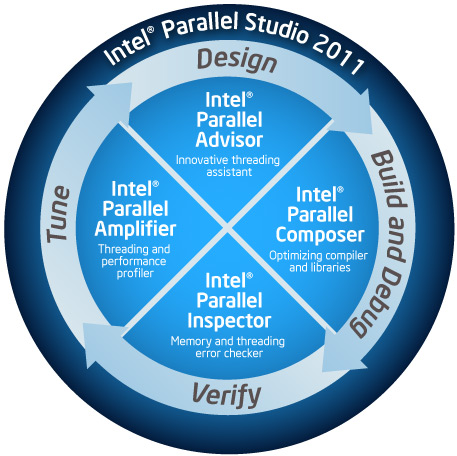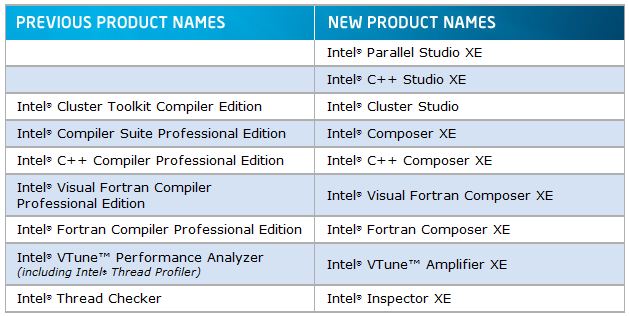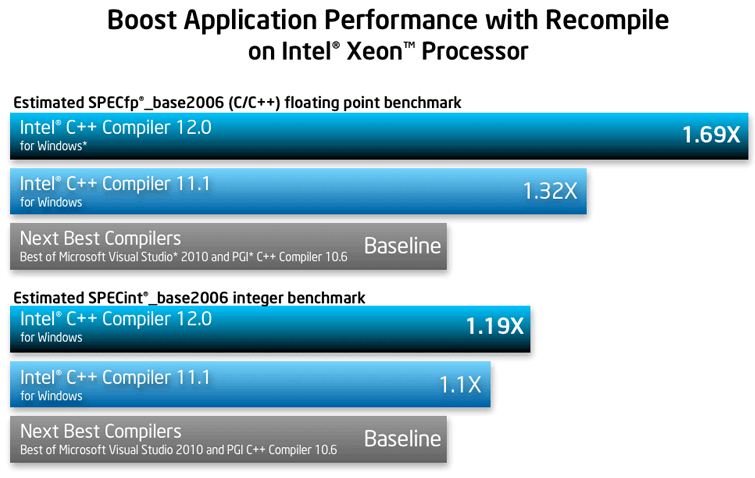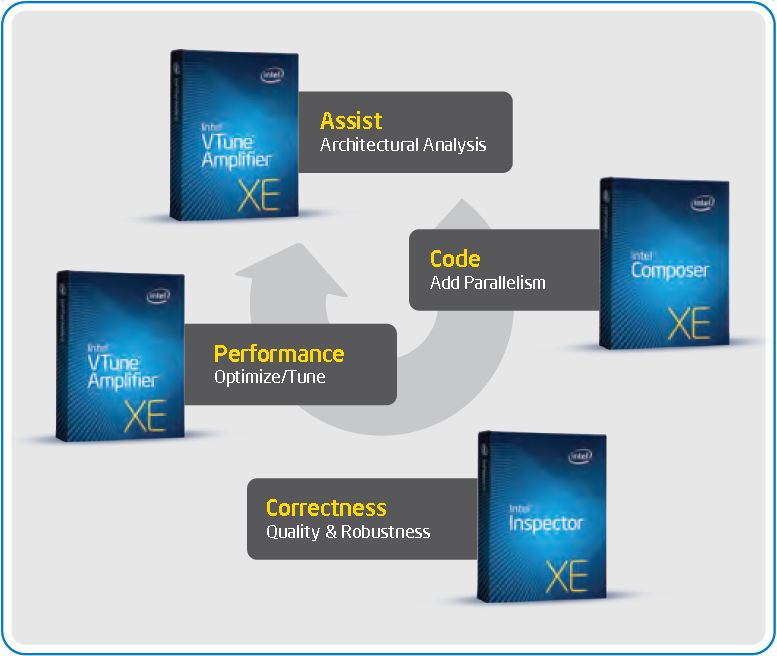Sponsored by Intel Parallel Studio
Sponsored Article: Hyper Performance Computing with Intel Parallel Studio 2011 XE
Parallel Studio Power Tools
In May of 2009, Intel released its Intel Parallel Studio 1.0, a suite of C++ plug-in tools for Microsoft Visual Studio developers wanting to leverage multi-core processors. The suite included three components: Parallel Composer for coding/debugging, Parallel Inspector for identifying memory and threading errors, and Parallel Amplifier for optimizing performance. At the same time, Intel released a Parallel Studio add-on called Parallel Advisor Lite for helping to identify where applications would most benefit from adding parallelism. The end result is a software collection to guide users through the complete application development cycle, from design through debugging and all the way to tuning.
Intel Parallel Studio 2011 launched in September 2010, updating the suite by adding two key toolsets. Parallel Advisor picks up where Advisor Lite left off, recommending the best methods at each step for optimizing parallelism. The Parallel Building Blocks toolset is a collection of task and data parallel models built on Intel’s prior Threading Building Blocks 3.0 C++ template library and a set of C++ language extensions acquired from Cilk Arts for specifying parallelism.
This brings us to the present and Intel’s release of Intel Parallel Studio XE 2011, now available for Windows and Linux, targeting both the C/C++ and Fortran programming languages. (Fortran, which is now over 50 years old, remains one of the most popular languages in high performance computing.) There are also several compilers and libraries for Mac OS X. Many of Parallel Studio’s program names have changed in this version, but the XE versions of Composer, Inspector, and (VTune) Amplifier remain at the heart of the collection. Let’s spotlight some of the biggest features in the new package.
Intel Composer XE. Probably the biggest headliner feature here is new support for Advanced Vector Extensions (AVX), a forthcoming extension to the x86 architecture in the MMX and SSE vein. AVX was first proposed by Intel in 2008 and will begin appearing in CPUs starting with Intel’s forthcoming Sandy Bridge chips. (The first Sandy Bridge CPUs are expected to launch in January for desktop and notebook PCs.) AVX support shows up throughout Composer XE, including the math and data processing libraries, plus there are new enhancements for AES instruction handling. The Intel Parallel Building Blocks portion of Composer XE features improvements in how application task, vector, and data parallelism leverage multicore optimizations.
Intel Inspector XE. Inspector XE performs C/C++ and Fortran code analysis. Specifically, the tool searches for memory corruption and leaks, threading deadlocks and data races, and source code security errors. With applications now being one of the top vectors for emerging malware, the importance of improving code security can’t be overstated. Being able to spot security holes early in the coding process is by far the cheapest and quickest way to deal with issues. Inspector XE can identify over 250 security flaws, such as buffer overruns and heap corruption. Intel wraps up this functionality in either GUI or command line interfaces, showing exactly where problems lie and how to fix them. Intel also piles on the reporting capabilities to help improve workflow.
Intel VTune Amplifier XE. There are two kinds of software multithreading performance bottlenecks: problems you have today and those you can expect to creep up tomorrow in the face of load scaling. Traditionally, this has been a fairly ambiguous troubleshooting area prone to a lot of trial and error. VTune’s job is to search for both present and future “hotspots” and report them through an intuitive graphical interface.
Implementation of these titles across Windows and Linux is now almost identical, and suite buyers get one year of Intel Premier Support. To take the suite for a free 30-day trial ride click here. Ready to buy or renew, click here.
Current page: Parallel Studio Power Tools
Prev Page Software to Make Intel CPUs Scream Next Page Taking Care of the ClusterGet Tom's Hardware's best news and in-depth reviews, straight to your inbox.
-
Is this thing only beneficial for Intel, or are the AMD CPU's going to get a free ride out of this as well? And also, if Intel is so much interested in improving multi-core performance in games, wouldn't it have helped if they'd let Nvidia or AMD(ATI) in on the development of this software? Just wondering. Cheers.Reply




